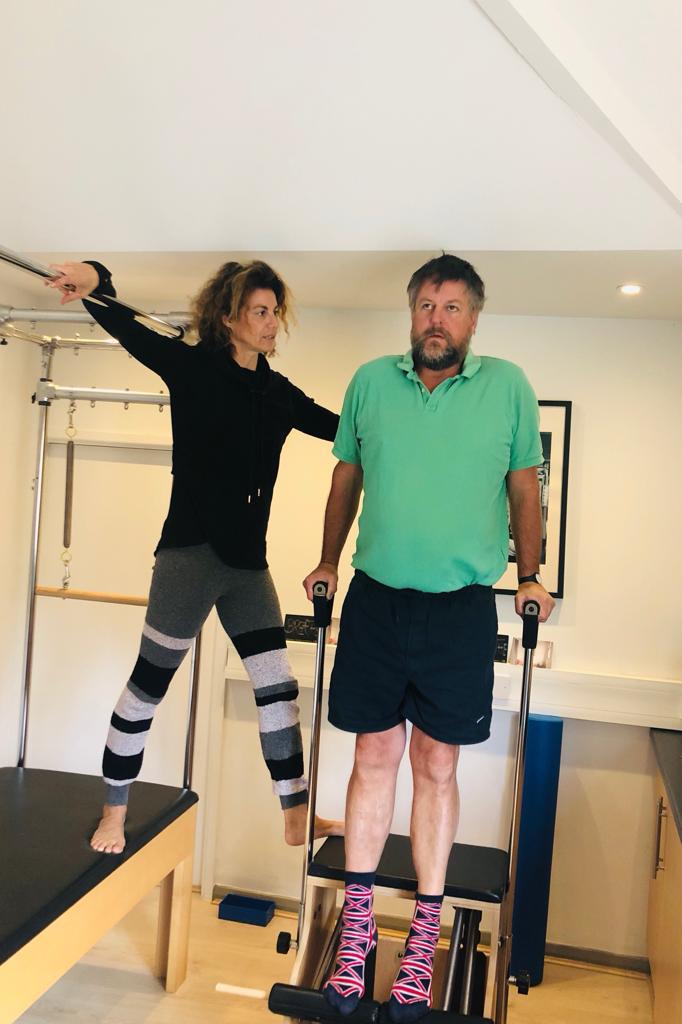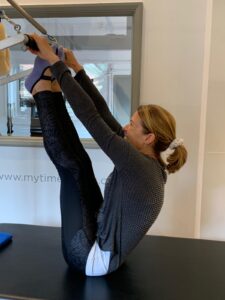Pilates Equipment Part Two: The Trapeze and the Chair
Last month, we talked out about one of our core machines at mytime – the reformer. But there are two other pieces of equipment that are integral to our Pilates sessions: the trapeze table and the chair.
Whereas the reformer is ostensibly a bed, the trapeze table and the chair offer slightly different frameworks which complement a Pilates regime perfectly. Over the years, I’ve used a great deal of Balanced Body equipment, and having used other brands, I find they offer the best-quality and most stable equipment on the market, which will no doubt last a lifetime at mytime.
Just like the reformer, both the trapeze table and the chair work with a series of springs which can be interchanged and adjusted according to individual preferences and abilities. So let’s take a closer look at each machine.
Trapeze table
The trapeze table was originally designed by Josef Pilates in the 1920s to help rehabilitate those with injuries, and provides balance through the use of spring resistance which is designed to work with both sides of the body simultaneously. It’s a really versatile piece of equipment for clients as it can be used in sitting positions, standing positions, and several lying positions, for instance supine (face up), prone (face down), or lateral (on your side). But it’s also good for the practitioner, as they do not need to bend down, having clients positioned at just the right level in front of them.
There are normally three sets of springs that are used for exercises involving the upper extremities (upper body): yellow springs are the weakest (i.e. offers the least resistance), blue springs are medium, and red springs are the strongest. Springs can be adjusted depending on clients’ needs. Meanwhile, for the lower extremities (legs), there are two longer springs you can use: yellow being the weakest and lilac being the strongest.
The trapeze table is like a four-poster bed. It’s a rectangular table with a soft padded surface, and four corner poles which are also connected at the top, so you can hang off the top bars as well. At one end of the table there is a push-through bar, from which you can hang short springs for the upper body and long springs for the legs, using a number of hooks. There are also several different handles which you can interchange and adjust by hooking on and off easily. At the other end of the table, there is a roll-down dowel bar which, again, can be used with a range of different springs depending on the resistance required.
The Chair
The chair was also designed by Josef Pilates, although this piece emerged slightly later, in the early 30s, when he was living in New York. The “Wunda Chair”, as he often referred to it, was originally designed for New York city apartments and entered the market as the first-ever home-gym apparatus, doubling up as a multi-faceted exercise machine during workout sessions, and then converting back to a comfy armchair during periods of rest and relaxation.
On the chair, you start off with four springs – two stronger black springs, and two weaker white springs – which are connected at one end to the paddle, and at the other end to either the first, second, third or fourth notch of the cactus, a component of the chair that allows you to adjust the height of the springs as required. The chair is also a versatile piece of equipment as you can sit on it, stand on it, and you can even lie on it on your front, i.e. in the prone position.
The chair comes with two stirrups, which you can adjust in height, which are attached to the outside of the frame. You can perform tricep press ups by standing on the paddle and pressing off the handles of the stirrups.
In all, these types of machines can be used to perform 250 exercises, if not more.
So there we have it. We are lucky enough to be using some iconic pieces originating from Pilates himself – which despite evolving into the modern equipment they are today – are still recognisable as the great design and engineering work of a true pioneer from almost a century ago! To find out more about how we use the trapeze table and chair in our equipment classes, speak to the team, or even better, come along and join us for a trial session!

